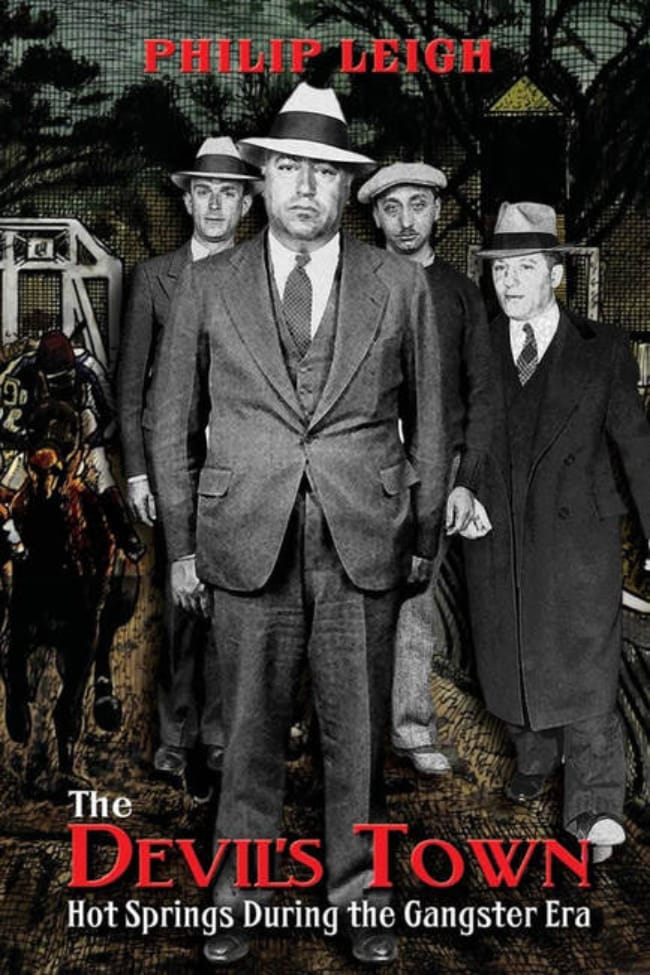

Uh oh...
It appears that you're using a severely outdated version of Safari on Windows. Many features won't work correctly, and functionality can't be guaranteed. Please try viewing this website in Edge, Mozilla, Chrome, or another modern browser. Sorry for any inconvenience this may have caused!
Read More about this safari issue.

Arkansas is a state of dramatic landscapes and beautiful cities, from the cliffs of the Buffalo River to the meandering rivers of the Arkansas Delta. Set among these places are the unique stories of the past that help shape the state today. These stories are told in some of Arkansas’s best nonfiction books.

Daughter of the White River
Denise Parkinson’s true crime story delves into the life of Helen Spence, a semi-legend and outlaw. Helen grew up within an impoverished houseboat community on the White River. She lived with her father and stepmother until her father was murdered. Parkinson picks up the story of the teen who shoots her father’s killer in the middle of his trial in an Arkansas courtroom. The book traces Helen’s conviction, parole and confession of another murder. She escaped multiple times from the State Farm for Women, where she was sentenced to ten years of hard labor. Her final escape resulted in her murder. Parkinson details the tragic life of this Arkansas daughter within the poverty and desperation of the Great Depression.
Warriors Don’t Cry
In 1957, Melba Pattillo Beals, along with eight other black teenagers, entered Central High School in Little Rock as the first black students to desegregate the public school system. In her autobiography, Beals lays out the hatred, harassment and abuse she faced daily from her fellow students and angry mobs that gathered outside the school. She peppers her account with the details recorded in her journal from that year and from her mother’s notes. Her story delineates the challenges these nine young students faced as they led the battle in integration.

Finding the Lost Year: What Happened When Little Rock Closed Its Public Schools
Although the desegregation of Little Rock Central High School gripped the nation in the fall of 1957, the following year proved to be just as rocky. Sondra Gordy carefully details the timeline of events in Little Rock throughout the 1958-1959 school year when the district chose to shut its doors rather than completely desegregate. Gordy sketches the impact the year had on the students, teachers and families caught up in a pivotal moment of American history.

The Earth Is Enough: Growing Up in a World of Fly-fishing, Trout, & Old Men
Harry Middleton’s novel is Arkansas’s own version of A River Runs Through It. The memoir is set in 1965, when a young Harry is sent to live with his uncle and his grandfather in the Ozark Mountains, far from his former home on a military base in Southeast Asia. Harry soon discovers his two aged caretakers care little for the outside world, as turbulent as it is in 1965. They also have no use for technological advances, preferring to simply farm the land as it has been farmed for ages, and fly fish in Starlight Creek. In this memoir, Harry looks back at the way his time in the quiet beauty of the Ozarks shaped he would be for the rest of his life.

Hangin’ Times in Fort Smith: A History of Executions in Judge Parker’s Court
The reputation of Judge Isaac C. Parker was infamous in his day. From 1875 to 1896, he presided over thousands of criminal court cases, many involving disputes in nearby Indian Territory. He has often been referred to as the hanging judge, as seventy-nine men were executed under his tenure. Author Jerry Akins argues that Parker’s moniker as the hanging judge is undeserved, and backs up his claim with firsthand accounts to bring to life the stories of some of the most notorious outlaws in Arkansas and the judge that convicted them.

Arkansas Beer: An Intoxicating History
It seems you can’t traverse Little Rock or Northwest Arkansas without stumbling upon microbreweries that promise a unique taste of Arkansas. Fayetteville writer Brian Sorenson traces the history of brewing in Arkansas and covers the explosion of brewing across the state.
Arkansas Beauty
You can’t spend time crisscrossing the Natural State for long without running across one of Tim Ernst’s many books. Arkansas Beauty captures the breathtaking naturalness of Arkansas, including waterfalls, bluffs, and Ozark mountain views. Ernst’s books are staples in showcasing the Natural State.

The Devil’s Town: Hot Springs During the Gangster Era
A list of Arkansas nonfiction wouldn’t be complete without a book featuring the state’s most infamous city. Phillip Leigh’s new book examines how the New York and Chicago mobs ran the city, detailing the depths of corruption that allowed the gangsters such free reign. He also covers the decline of the gangster era and how the city recovered from its earlier criminal past.


Main Street Arkansas
Brothers Ray and Steven Hanley celebrate the vibrancy of Main Street across Arkansas. The book features postcards and photographs of some of the most well-known cities in the state, and also some lesser-known Main Streets. Some postcards reveal the bare beginnings of cities with wooden storefronts and horses, and the 1950s snapshots bring back the nostalgia of the era when Main Street was king. Visit Arkansas through all 233 postcards in the book and take a peek into a beloved part of Arkansas’s history.
These nonfiction books, all set in Arkansas, reveal the complicated history of the state. Which true story set in Arkansas is your favorite read?
Header photo is courtesy of Denise Parkinson and used with permission.
We do the work.
You check your email.
Sign up for our weekly e-news.
Get stories sent straight to your inbox!









Like this story? Read more from Kimberly Mitchell
The American Black Walnut is a unique nut for many reasons, and Arkansas...
The Razorbacks are famous across Arkansas and beyond. Many sports fans...
Women’s volleyball has become a central sport in Arkansas, deeply...
Join the Conversation
Leave a Comment